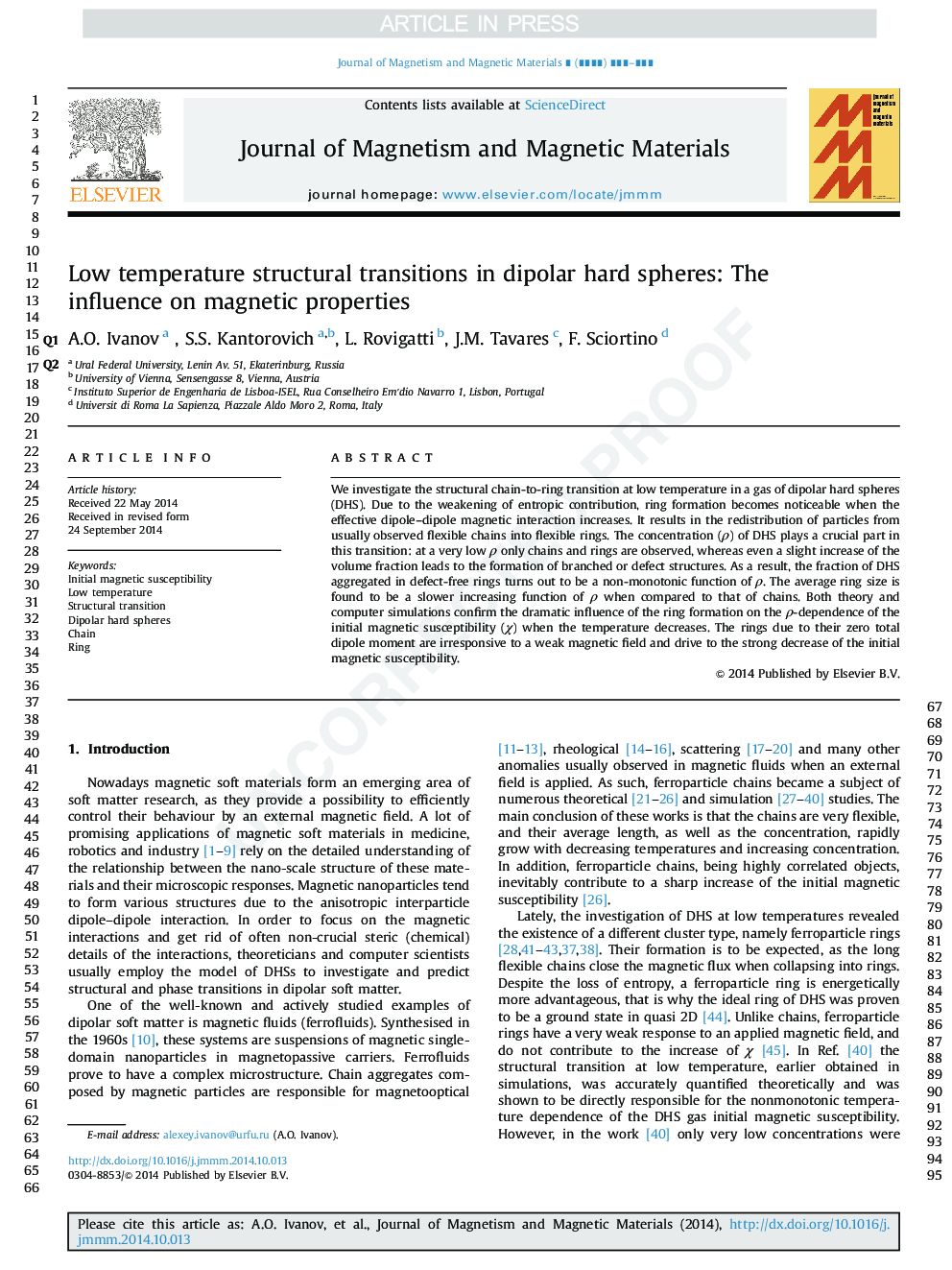| Article ID | Journal | Published Year | Pages | File Type |
|---|---|---|---|---|
| 8155999 | Journal of Magnetism and Magnetic Materials | 2015 | 5 Pages |
Abstract
We investigate the structural chain-to-ring transition at low temperature in a gas of dipolar hard spheres (DHS). Due to the weakening of entropic contribution, ring formation becomes noticeable when the effective dipole-dipole magnetic interaction increases. It results in the redistribution of particles from usually observed flexible chains into flexible rings. The concentration (Ï) of DHS plays a crucial part in this transition: at a very low Ï only chains and rings are observed, whereas even a slight increase of the volume fraction leads to the formation of branched or defect structures. As a result, the fraction of DHS aggregated in defect-free rings turns out to be a non-monotonic function of Ï. The average ring size is found to be a slower increasing function of Ï when compared to that of chains. Both theory and computer simulations confirm the dramatic influence of the ring formation on the Ï-dependence of the initial magnetic susceptibility (Ï) when the temperature decreases. The rings due to their zero total dipole moment are irresponsive to a weak magnetic field and drive to the strong decrease of the initial magnetic susceptibility.
Related Topics
Physical Sciences and Engineering
Physics and Astronomy
Condensed Matter Physics
Authors
A.O. Ivanov, S.S. Kantorovich, L. Rovigatti, J.M. Tavares, F. Sciortino,
